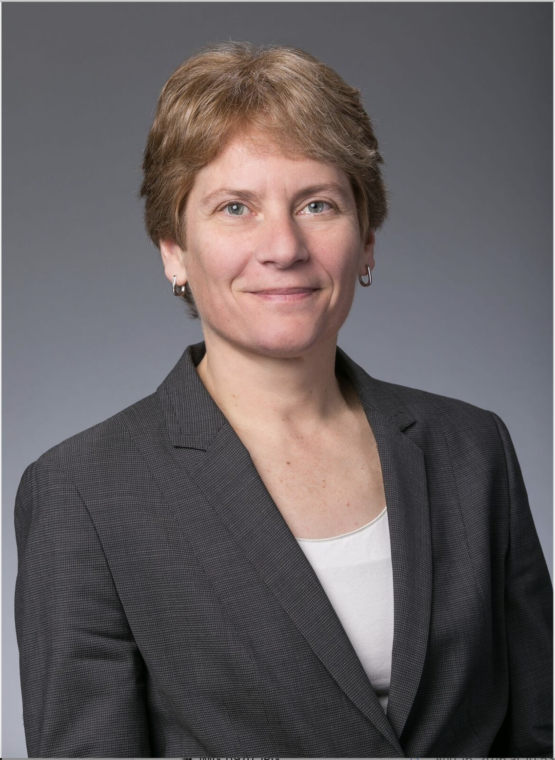Carolyn Bertozzi named Baker Family Director of Stanford ChEM-H
Chemistry Professor Carolyn Bertozzi says recruiting world-class scientists and engineers and developing ChEM-H into a hub where doctors and researchers can come together will be two of her main goals.
Chemistry Professor Carolyn Bertozzi has been named the Baker Family Director of Stanford ChEM‑H, an interdisciplinary research institute launched in 2013 to bridge chemistry, engineering and medicine to improve human health.
Bertozzi steps into the role after serving as ChEM-H’s co-director for the past two years with chemical engineering Professor Chaitan Khosla.
“Carolyn is a gifted scientist, teacher and leader,” said Kathryn “Kam” Moler, vice provost and dean of research at Stanford University. “We’re lucky that she is committed to bringing together a diverse group of scientists to advance and transform research that could dramatically improve human health.”
Since its founding, ChEM-H has recruited faculty and students, supported interdisciplinary research and established shared resources to help researchers tackle big problems related to the understanding, diagnosis and treatment of diseases.
“The best therapeutics and the best strategies for treating diseases only come when we get researchers and clinicians from different disciplines in the same space,” said Bertozzi, who is the Anne T. and Robert M. Bass Professor in the School of Humanities and Sciences.
That space is now the new Stanford ChEM-H Building, part of a joint research complex with the Stanford Neurosciences Building, which opened its doors last year. Home to the institute’s core faculty members and shared, collaborative labs known as Knowledge Centers, the ChEM-H Building is a center for interdisciplinary discovery and clinical translation.
“The first several years of our institute have been dedicated to constructing the machine that is ChEM-H,” said Bertozzi. “The next five years will be about operating the machine, capitalizing on our intellectual and technical prowess and delivering on our promise to become a hub where doctors and researchers come together and develop new medicines and diagnostics.”
Khosla said he is excited to see ChEM-H grow and evolve under Bertozzi’s leadership. “Working beside Carolyn has been energizing and there is nothing more meaningful to me than her agreeing to take the reins,” he added.
Khosla will remain closely tied to ChEM-H as he transitions to lead the Innovative Medicines Accelerator, or IMA, a new, university-wide initiative incubated by ChEM-H and Stanford Medicine that will accelerate the translation of Stanford research discoveries into new medicines while expanding our knowledge of human biology.
A training ground for future scientific leaders
The first stage of ChEM-H’s institutional life has been characterized by the recruitment and training of young scientists poised to tackle important problems that don’t fall neatly within disciplinary boundaries. Bertozzi has led the ChEM-H Chemistry/Biology Interface (CBI) training program since joining the Stanford faculty in 2015. The program welcomes trainees from departments in the schools of Medicine, Engineering, and Humanities and Sciences, and teaches them to communicate across fields and identify areas ripe for discovery or collaboration.
“The CBI trainees are some of the most open-minded students I have encountered,” said Bertozzi. “They don’t just want a view outside their home department, they want an experience outside their home department.” To date, half of all CBI students have joined research labs outside their degree-granting departments.
Central to the ChEM-H commitment to preparing for the future of scientific research is recruiting professors whose work straddles disciplines and addresses unmet needs in human health research. ChEM-H has already hired eight junior faculty members whose work spans areas like genome engineering, cancer immunology and metabolism, and Bertozzi plans to hire more in the coming years.
“Each time we bring a new faculty member or a new cohort of graduate students to Stanford is an opportunity to enhance our diversity, which is critical for the excellence of our institute and university and for our impact in the world,” said Bertozzi. “I feel an enormous responsibility to take full advantage of those opportunities, and I hope the recruitment of world-class scientists is part of my legacy at ChEM-H.”
Jet fuel to accelerate discovery
Bringing together people motivated to solve interdisciplinary problems is only part of the equation. Scientific problems, techniques and instrumentation can accelerate and pivot quickly, and ChEM-H was built to anticipate and adapt to the rapidly changing landscape of human health research.
At the heart of this flexibility is the shared research platform provided by the ChEM-H Knowledge Centers, collaborative labs staffed by experts in their fields who have the technical skill, experience and equipment to help researchers at the point when their project transitions from something purely biological or chemical, for example, into something interdisciplinary.
“Shared resources, instruments and expertise help democratize scientific discovery and innovation,” said Bertozzi. “These Knowledge Centers shift the burden from individual labs and allow more people to solve big problems with cutting-edge technologies.”
The three existing Knowledge Centers are aimed at visualizing large molecules, translating biochemical pathways or targets into drug prototypes, and quantifying small molecules in cells or tissues. A fourth, directed at implementing high-throughput screening to help researchers fish out possible drug prototypes from a sea of thousands of drug-like molecules, is set to open in 2021.
The COVID-19 pandemic has tested the ChEM-H model. ChEM-H has helped the IMA award seed grants to researchers to develop drug and vaccine prototypes and expand a biosafety level 3, or BSL3, facility on campus. These high-security labs are critical for safely handling potentially deadly airborne pathogens such as the SARS-CoV-2 virus that causes COVID-19.
A rapid response to the COVID-19 pandemic is an example of the power of translational, interdisciplinary research, but it is just one of many human health problems that ChEM-H could tackle. “ChEM-H is the jet fuel that propels discovery, innovation and invention,” said Bertozzi. “It is a platform that will accelerate the development of new medicines and new ways of thinking about human health and disease.”

